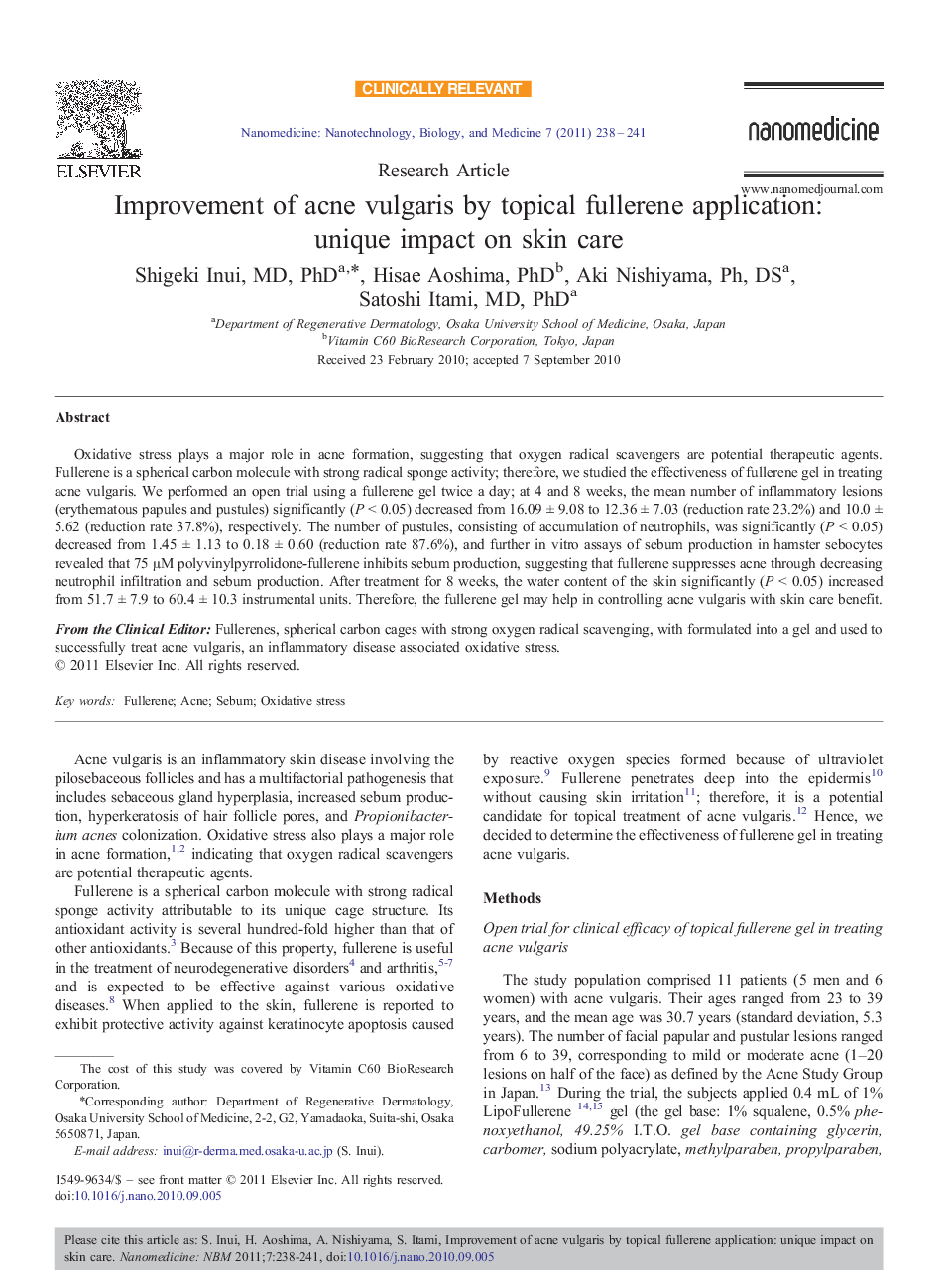| کد مقاله | کد نشریه | سال انتشار | مقاله انگلیسی | نسخه تمام متن |
|---|---|---|---|---|
| 877705 | 911041 | 2011 | 4 صفحه PDF | دانلود رایگان |

Oxidative stress plays a major role in acne formation, suggesting that oxygen radical scavengers are potential therapeutic agents. Fullerene is a spherical carbon molecule with strong radical sponge activity; therefore, we studied the effectiveness of fullerene gel in treating acne vulgaris. We performed an open trial using a fullerene gel twice a day; at 4 and 8 weeks, the mean number of inflammatory lesions (erythematous papules and pustules) significantly (P < 0.05) decreased from 16.09 ± 9.08 to 12.36 ± 7.03 (reduction rate 23.2%) and 10.0 ± 5.62 (reduction rate 37.8%), respectively. The number of pustules, consisting of accumulation of neutrophils, was significantly (P < 0.05) decreased from 1.45 ± 1.13 to 0.18 ± 0.60 (reduction rate 87.6%), and further in vitro assays of sebum production in hamster sebocytes revealed that 75 μM polyvinylpyrrolidone-fullerene inhibits sebum production, suggesting that fullerene suppresses acne through decreasing neutrophil infiltration and sebum production. After treatment for 8 weeks, the water content of the skin significantly (P < 0.05) increased from 51.7 ± 7.9 to 60.4 ± 10.3 instrumental units. Therefore, the fullerene gel may help in controlling acne vulgaris with skin care benefit.From the Clinical EditorFullerenes, spherical carbon cages with strong oxygen radical scavenging, with formulated into a gel and used to successfully treat acne vulgaris, an inflammatory disease associated oxidative stress.
Graphical AbstractIn active acne lesions much amount of sebum is produced and neutrophils infiltrate into pilo-sebaceous units but, after topical fullerene is applied onto skin, superoxides are scavenged and suggestively neutrophilin filtration and sebum production is reduced, resulting in suppression of in flammation.Figure optionsDownload high-quality image (196 K)Download as PowerPoint slide
Journal: Nanomedicine: Nanotechnology, Biology and Medicine - Volume 7, Issue 2, April 2011, Pages 238–241